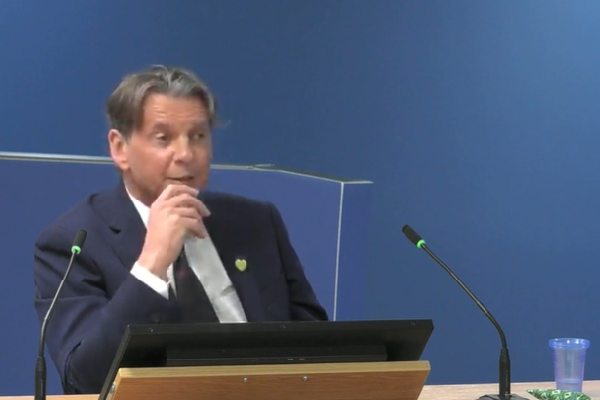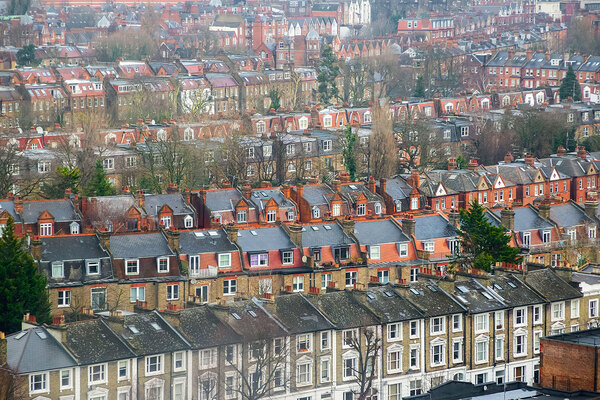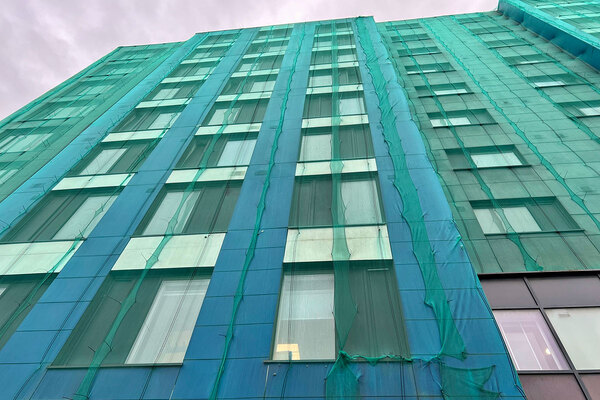KCTMO dismissed Grenfell residents’ group as a ‘showcase’, inquiry hears
Managers at Kensington and Chelsea Tenant Management Organisation (KCTMO) dismissed a residents group set up to raise issues with the refurbishment of Grenfell Tower as a “showcase”, emails disclosed by the inquiry today reveal.
David Collins, former chair of the Grenfell Tower Residents Group (later known as the Grenfell Compact), gave evidence today about his efforts to raise complaints about the refurbishment with KCTMO.
The inquiry was shown an email sent by Claire Williams, project manager for KCTMO, shortly after the group was established, which said she had discussed the new group with Robert Black, chief executive of KCTMO.
“We discussed the fact that the preference was not to meet up with the Grenfell Community Unite group which could be a showcase for [Edward] Daffarn,” she wrote.
Mr Daffarn was another founding member of the group and had previously raised issues about KCTMO’s services.
Asked today if the group was a ‘showcase’, an emotional Mr Collins described the email as a “disgrace”.
“Do you seriously want me to begin to answer that question?” he said. “There are recorded videos we have of meetings where people were talking about the same issues. It’s not just Ed.”
Later in his evidence, he explained that the group could represent tenants who did not feel comfortable raising complaints individually.
“They didn’t have the confidence or the ability or the technology to enter into a long-standing complaint that might go two or three years without resolution,” he said. “That’s a hard thing to do if you don’t have confidence or you don’t feel good or your mental health isn’t stable.”
The group was eventually only able to secure a meeting with KCTMO after the intervention of Victoria Borwick, the Conservative MP for the area at the time.
It raised numerous concerns with KCTMO’s management, particularly around the positioning of new heating units within flats, complaints, and the state that flats were being left in by contractor Rydon.
In a lengthy witness statement submitted to the inquiry, Mr Collins said his concerns about the quality of the refurbishment began in 2014 when he witnessed issues such as holes of 30cm in diameter drilled into floor slabs through 17 floors of the tower.
He explained that the resident group was formed following meetings of up to 100 residents in March 2015.
Legal letters were sent to social tenants in the tower threatening them with action if they refused access to contractors in spring 2015, his witness statement said.
“We all shared the fears of potential court cases, spiralling costs, and the loss of tenancies,” he said.
He also said residents were threatened with loss of hot water if they did not agree to the works.
He said a door-knocking exercise of 58 homes in November 2015 revealed that 68% said they had felt “pressured, harassed, lied to, or threatened the project’s execution”.
The group also raised concerns about the changes to floor numbering in the tower. As commercial units in the lower four floors were converted to residential, the floors higher up were renumbered.
This meant the flat number no longer corresponded to the floor number: eg, flat 185 had previously been on the 18th floor but was now on the 21st.
The group proposed having a separate numbering system for the lower floors and retaining the door numbers for the rest of the tower. This was presented to KCTMO but was rejected.
“It just didn’t make sense,” Mr Collins told the inquiry. “If a fireman was looking for your flat he wouldn’t find your door.”
Evidence from firefighters in the first phase did suggest confusion over floor numbering as crews attempted to find trapped residents.
Mr Collins presented photographs that showed signs put up to explain the new numbering had fallen off the walls in less than two weeks. Mr Collins had moved out of Grenfell Tower by the time of the fire.
Earlier, the inquiry heard from Lee Chapman (pictured below), former secretary of the Grenfell Tower Leaseholder Association, who explained concerns he raised about gas pipes installed in the tower by the National Grid in spring 2017.
At the time of the fire, this work had not completed and it is believed that some of the pipes were still not boxed-in – and the inquiry is set to examine what effect this may have had on the spread of smoke around the building.
The inquiry saw emails – previously obtained by Inside Housing – from the leaseholders group calling for the appointment of an independent expert to assess the safety of the work.
One, sent by Tunde Awoderu, vice-chair of the group, in March 2017 said he believed the work had “put our lives in danger and we don’t feel secure in the building anymore”.
“I am seriously concerned about how I will get out of the building alive in the event of a fire with this added risk,” added Mr Chapman in a follow-up email the same month. “If we cannot get out people will die or at best suffer serious injury.”
He added that there were “many people in this building who are immobile, very young or suffer from mental health issues”.
KCTMO’s responses emphasised that the work was the responsibility of the National Grid and, following a second-stage complaint by the leaseholders, committed to a professional assessment of them following completion.
Mr Chapman described the responses to the complaints as “totally uninformative and generic” and said there was “an us-and-them” relationship between residents and the landlord.
He was at a business conference in Malaysia on the night of the fire. His wife Naomi narrowly escaped after a harrowing descent through a smoke-filled staircase from their 22nd-floor flat.
The inquiry continues tomorrow with evidence from four more former residents.
Sign up for our weekly Grenfell Inquiry newsletter
Each week we send out a newsletter rounding up the key news from the Grenfell Inquiry, along with the headlines from the week
Already have an account? Click here to manage your newsletters














